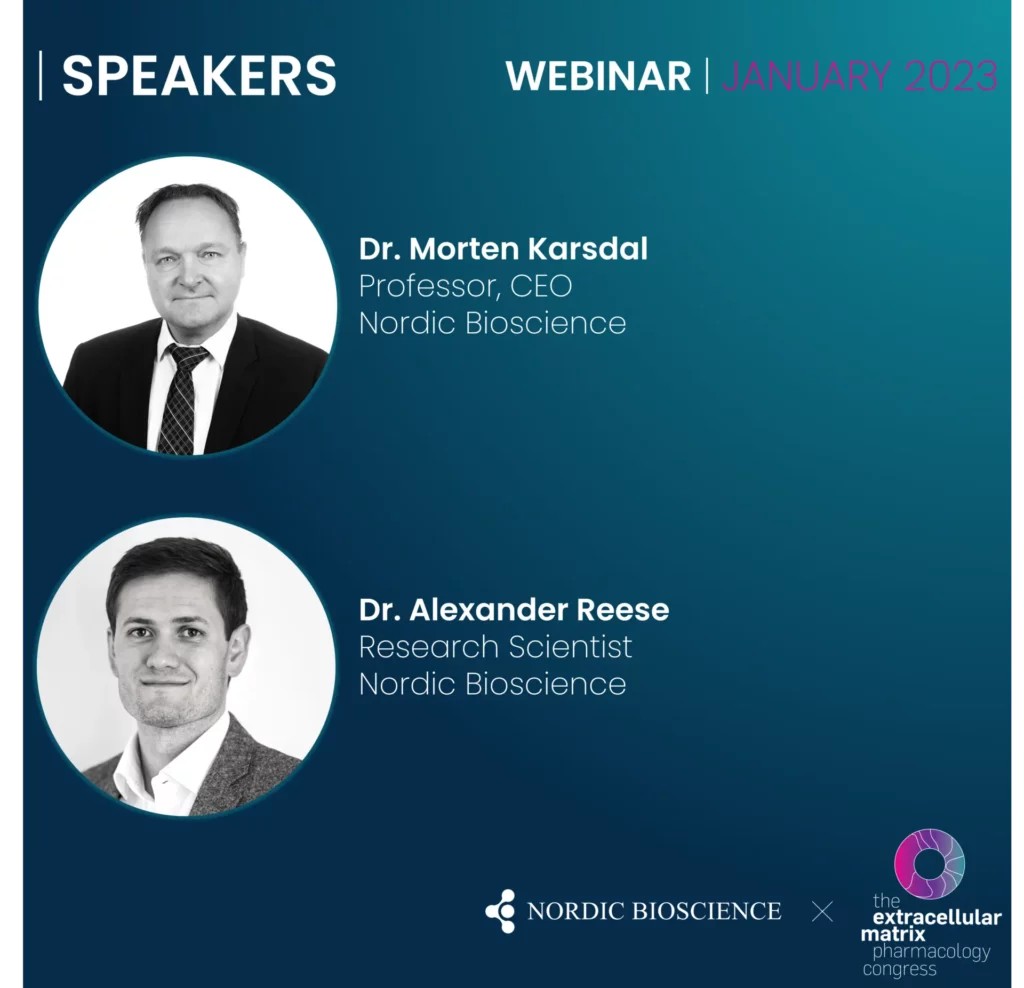HFpEF and Extracellular Matrix Dysregulation: Novel Treatment Strategies
January 1, 2023
The session will include a stimulating talk by Dr. Morten Karsdal on understanding the mysteries of the different types of collagens. Dr. Alexander Lynge Reese-Petersen will then spotlight collagen type VI and its relationship to various pathologies, as well as the pharmacological and biological properties of the dangerous hormone Endotrophin.
Scientific topics
Extracellular matrix (ECM) dysregulation is the founding cause of tissue fibrosis, a process driving more than 50 pathologies and most chronic diseases. Fibrosis may develop both consequent to either an increase in tissue formation or a decrease in tissue degradation.
Understanding the ECM and the central components of the basement membrane and interstitial ECM will lead to a better understanding of disease mechanisms and to novel treatment strategies. This may be a central part in precision medicine strategies to target the right patients.

Dr. Morten Karsdal will talk about:
- ECM remodeling is the common denominator of all fibro-inflammatory disorders
- Collagens have signaling molecules that we need to understand to understand how the ECM affects cells in fibrosis and tissue turnover
- Endotrophin and other collagen fragments (Vastatin, Tumstatin and Endostatin) are potential signaling molecules derived from the processing of the collagens in the ECM
- Understanding ECM turnover may lead to better insight into disease mechanisms and better biological understanding of individual patients
Dr. Alexander Reese’s presentation will cover:
- ECM biomarkers are elevated in chronic pathologies and have prognostic significance for outcome. How can we best use this to guide drug development?
- Endotrophin, a collagen hormone in multi-organ diseases
- Endotrophin in HFpEF, a potentially treatable high-risk endotype
- Use of the tissue turnover profile for patient selection




